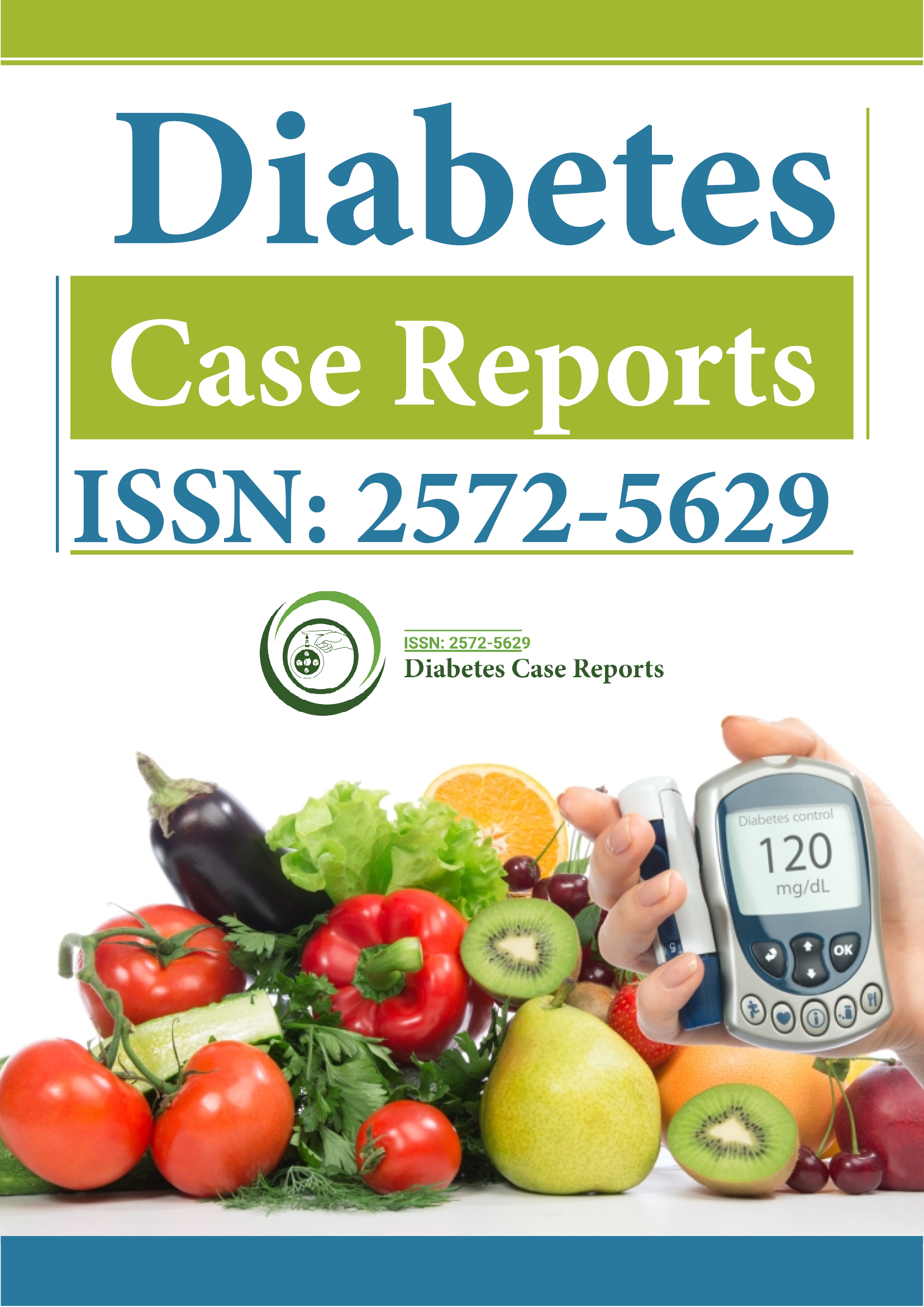Indexed In
- RefSeek
- Hamdard University
- EBSCO A-Z
- Euro Pub
- Google Scholar
Useful Links
Share This Page
Journal Flyer

Open Access Journals
- Agri and Aquaculture
- Biochemistry
- Bioinformatics & Systems Biology
- Business & Management
- Chemistry
- Clinical Sciences
- Engineering
- Food & Nutrition
- General Science
- Genetics & Molecular Biology
- Immunology & Microbiology
- Medical Sciences
- Neuroscience & Psychology
- Nursing & Health Care
- Pharmaceutical Sciences
Commentary - (2025) Volume 10, Issue 1
The Role of Insulin Pumps in Reducing Hypoglycemic Optimization
Todesca Hinkes*Received: 24-Feb-2025, Manuscript No. DCRS-25-29084; Editor assigned: 26-Feb-2025, Pre QC No. DCRS-25-29084; Reviewed: 12-Mar-2025, QC No. DCRS-25-29084; Revised: 19-Mar-2025, Manuscript No. DCRS-25-29084; Published: 26-Mar-2025, DOI: 10.35841/2572-5629.25.10.235
Description
Insulin pump therapy is an advanced method of insulin delivery used primarily by individuals with type 1 diabetes and, in some cases, by those with type 2 diabetes who require intensive insulin management. Unlike traditional insulin injection methods using syringes or pens, an insulin pump delivers a continuous and adjustable flow of insulin through a small device worn on the body. This form of therapy is designed to more closely mimic the pancreas's natural release of insulin, providing both basal background and bolus mealtime insulin doses throughout the day.
The insulin pump is typically a small, computerized device about the size of a pager. It contains a reservoir filled with rapid-acting insulin, which is delivered through a thin plastic tube called an infusion set. The infusion set is inserted under the skin, usually on the abdomen, thigh, or buttocks, and is changed every two to three days. The pump can be clipped to clothing or carried in a pocket, providing a discreet and portable means of insulin administration.
One of the main advantages of insulin pump therapy is the ability to program basal rates to suit an individual's unique insulin needs throughout the day and night. The basal rate can be adjusted in real time to accommodate factors such as exercise, illness, stress, or hormonal fluctuations. This flexibility helps maintain more stable blood glucose levels and reduces the risk of both hyperglycemia and hypoglycemia.
Insulin pump therapy can be particularly beneficial for individuals who struggle with glycemic variability or who experience frequent hypoglycemic episodes. It offers tighter glucose control, which has been shown to reduce the risk of long-term diabetes complications, such as retinopathy, nephropathy and neuropathy. Additionally, pump therapy can offer greater convenience and lifestyle flexibility, allowing users to adjust insulin delivery without multiple daily injections.
Recent technological innovations have led to the development of “smart” insulin pumps, often referred to as hybrid closed-loop systems or artificial pancreas systems. These pumps are integrated with Continuous Glucose Monitors (CGMs) and use algorithms to automatically adjust insulin delivery based on real-time glucose readings. While users still need to announce meals and enter carbohydrate amounts, the system handles many day-to-day insulin adjustments, significantly reducing the burden of diabetes self-management.
Cost is another consideration. Insulin pumps and their associated supplies can be expensive, and not all insurance plans cover them. However, for many users, the improved quality of life and glycemic control justify the investment. Moreover, healthcare providers and diabetes educators play a crucial role in helping patients assess whether pump therapy is appropriate for them, and in providing ongoing support for successful use.
Pump therapy is not suitable for everyone. Candidates for insulin pump therapy typically include individuals with type 1 diabetes who are motivated and capable of managing their diabetes intensively. People with frequent severe hypoglycemia, dawn phenomenon early morning blood glucose spikes or inconsistent blood glucose patterns may particularly benefit. That said, successful pump use depends heavily on patient engagement, understanding of insulin action, carbohydrate counting skills, and routine blood glucose or CGM monitoring.
Conclusion
Insulin pump therapy represents a powerful tool in modern diabetes management. It offers accurate, customizable insulin delivery and the potential for improved blood glucose control, which can lead to better health outcomes and enhanced quality of life. While it requires commitment and technological literacy, the benefits for many users are substantial. As pump technology continues to evolve especially with the integration of AI-driven algorithms and real-time glucose monitoring it brings the medical community closer to the goal of fully automated, modified diabetes care.
Citation: Hinkes T (2025). The Role of Insulin Pumps in Reducing Hypoglycemic Optimization. Diabetes Case Rep. 10:235.
Copyright: © 2025 Hinkes T. This is an open-access article distributed under the terms of the Creative Commons Attribution License, which permits unrestricted use, distribution and reproduction in any medium, provided the original author and source are credited.
